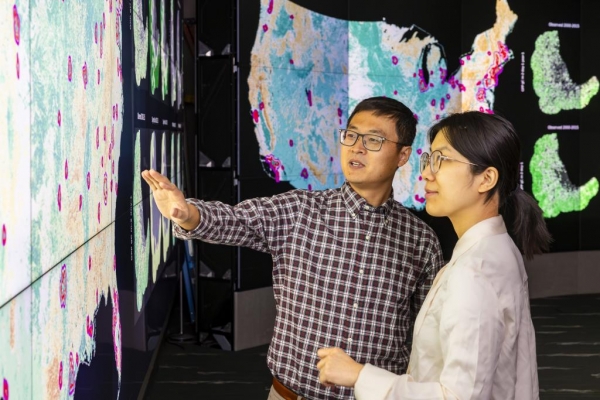Local decision-makers looking for ways to reduce the impact of heat waves on their communities have a valuable new capability at their disposal: a new study on vegetation resilience.
Local decision-makers looking for ways to reduce the impact of heat waves on their communities have a valuable new capability at their disposal: a new study on vegetation resilience.
Scientists at the Department of Energy’s Oak Ridge National Laboratory completed a study of how well vegetation survived extreme heat events in both urban and rural communities across the country in recent years. The analysis informs pathways for climate mitigation, including ways to reduce the effect of urban heat islands.
Vegetation such as trees provide a valuable cooling effect, shading surfaces and deflecting solar radiation while releasing moisture into the atmosphere through evapotranspiration — the process in which plants absorb water through their roots and release it as water vapor through their leaves.
Read more at DOE/Oak Ridge National Laboratory
Image: Jiafu Mao, left, and Yaoping Wang discuss their analysis of urban and rural vegetation resilience across the United States in the EVEREST visualization lab at ORNL. (Credit: Carlos Jones/ORNL, U.S. Dept. of Energy)




